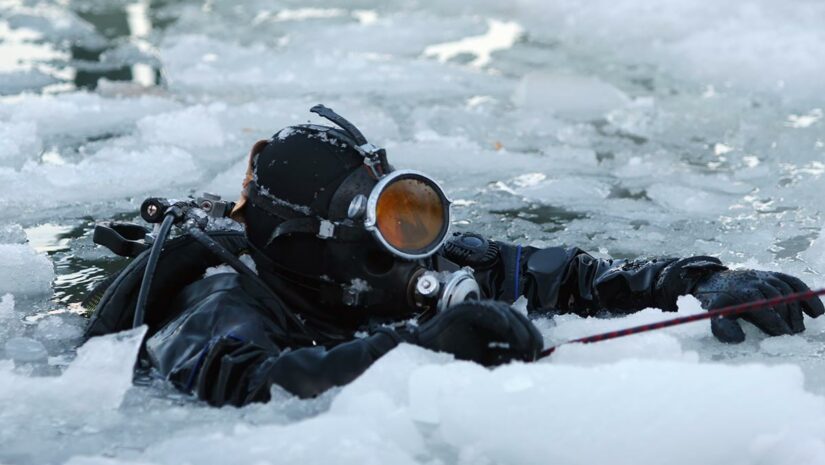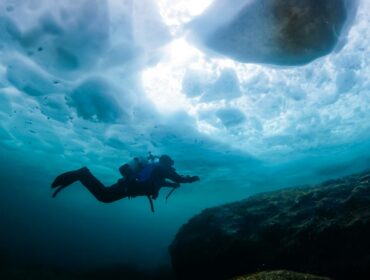You’ve probably heard of Scuba diving in the Red Sea and even in the Black Sea, but have you heard of White Sea diving? I bet, even on just reading ‘White Sea’ many of you scratched your heads wondering where it was. Well, if the title of this post hasn’t already given it away, the White Sea lies to the northwest of Russia almost on the Arctic/Polar Circle. So Scuba diving in the Arctic? Is anyone crazy enough to do that? you may ask, and the answer is Yes.
Ice Diving is one of the most adventurous and extreme diving experiences you can have in the World of Scuba. While most of the popular and easily accessible ice diving destinations include lakes that freeze over in winter, to enjoy real marine ice diving the best 2 two ice diving destinations are- Antarctica and the White Sea in Russia (Arctic). It’s a whole new world beneath the ice in these places. Since cold water holds more oxygen than warm water, it provides a richer environment for marine life to thrive and the extreme conditions give rise to species that are specific to these regions exclusively. The cold also makes the water as clear as air with visibility that often exceeds 40-50m (130- 160ft). In McMurdo Sound, Antarctica visibility is an unbelievable 300m (990 ft)!
The White Sea however, is more accessible than diving in Antarctic. The coast of the white sea can be reached by railroad, approximately 27 hours north of Moscow the country’s capital city. Scuba diving here requires all divers to have an ice-diving certification from the PADI and be proficient in dry-suit use with a minimum of twenty logged dry suit dives. Divers head over to the dive sites by snowmobiles and penetrate the ice that sometimes may be 1.5 meters thick, through sawed rectangular holes. Equipped with Scuba gear- lots of it, including multiple layers of clothing worn under a drysuit, rubber outer gloves, neoprene hoods, full face masks plus the regular fins, tank and lead weights divers finally take the plunge. Considering the increased possibility of the regulator valves freezing, either blasting a diver with free-flowing air or shutting off the air supply altogether. So, every air tank for ice diving has two valves and the mouthpiece valve features a special freeze-resistant design.
Divers go down in buddy pairs with with a safety rope tied to the waist of each diver and the divers are meant to hold the rope. A tender person on the surface holds the rope of which the end is fixed by an ice-screw. Once under, the landscape is magnificent with rock walls plunging into the depths, swaying kelp, ice masses towering on the surface and the shimmering sunlight that streams through the ice sheath above as if through a kaleidoscope. On rocks below lie starfish and related brittle stars of every color and description. Dense forests of large round anemones in bright almost psychedelic colors along with sponges and algae line the floors and rainbow-tinged comb jellies, cod, wolf-fish, sea perch and butter fish may occasionally swim by.
The White Sea in Russia is truly one of the most unique dive destinations and one of the best place in the world to Ice dive. Diving here is the perfect way to slip into a winter of diving. It’s bound to take your breath away leave you with an admiration for the severe beauty of the Russian North and marine ice diving.



